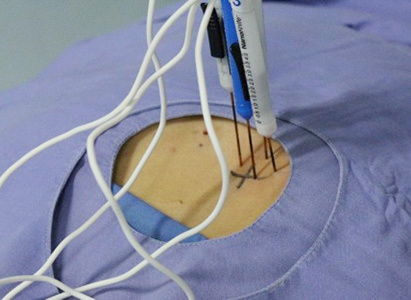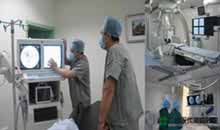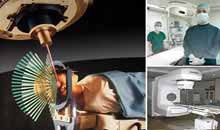
First Case of Nanoknife Pancreatic Cancer Ablation Performed Successfully in MCHG
Nanoknife ablation is to break through tumor cells by 1500 volts high-voltage pulse, accelerating cancer cells apoptosis without any injury to the surrounding tissues. A few days ago, the first CT guided general anesthesia Nanoknife pancreatic cancer ablation was performed successfully in MCHG by expert team including professor Bai haishan, who is a minimally invasive expert in China and senior doctor of MCHG, together with medical radiography expert Zhen Yanli, which is really a pioneering work.
1. 1 millimeter electrode probe
Sophie, Filipino, noticed the yellowing eyes and skin a month ago and then she came for an ultrasound to find out a pancreatic tumor. Introduced by one of her friend, she comes to MCHG for regarding treatment. After admission, blood test and CT scan are done immediately to have the final diagnosis, which is pancreatic cancer. According to former experience, surgery for pancreatic cancer possesses high risk and radical resection impossibility. Both chemotherapy and radiotherapy have limited effect on pancreatic cancer.
Considering all these facts, professor Bai together with the MDT organize a joint consultation about Sophie’s case, and finally decide to adopt the most advanced Nanoknife therapy for her. General anesthesia is performed previously, and then 5 pieces of 1 millimeter electrode probe are inserted into the pancreatic tumor with CT guided. Technician figures out the size and range of electric field according to tumor size by ultrasonic detection. Based on the former information, doctors adopt three groups of electric shock with 70 times of discharge and 1500 voltage each time. Barely after few seconds, lower level of echo showed on the ultrasonic monitoring screen and cancer cells begin to apoptosis and necrosis. Thereafter, Sophie’s condition improves. Her eyes and skin switched back to normal gradually.
2. without injury on the normal surrounding tissues and with short ablation duration
Nanoknife is applied to clinical under the permission of U.S. FDA in 2012, and it introduced into China for treatment on liver, pancreatic and other soft tissues cancer in 2015, which is a rising tumor ablation therapy. Nanoknife is to break through cancer cells by 1500 to 3000 volts direct current, punch a permanent nano porous on cancer cells, accelerating apoptosis of cancer cells. In general, Nanoknife possesses three advantages compared with other ablation therapies.
First of all, Nanoknife possesses distinct border of ablation area and reduced recurrence rate. Regardless of location, size and form of the tumor, complete ablation can be got through Nanoknife. Secondly, Naonoknife has a given destructive function on cancer cells, without injury on vein, nerve, windpipe, bile duct and other normal tissues, which is particular suitable for tumor located close to aorta, hepatic hilar region, gall bladder, bile duct and ureter. Above all, the most prominent advantage is short ablation duration. “Even if the solid tumor reaches 3cm in diameter, the whole ablation duration would be less than 5 minutes. Each pair of probe release 90 times of ultrashort pulse and each group of ablation takes less than 1 minute. For Nanoknife therapy, three or four overlapped ablation zones are allowed. If physical condition permitted, the patient can get discharged from the hospital on the day of treatment or the other day,” professor Bai says.
If you have any questions, please contact us via online consultation, email or phone call. If you find our website useful, please follow our FaceBook and YouTube, health information will be updated regularly.


























